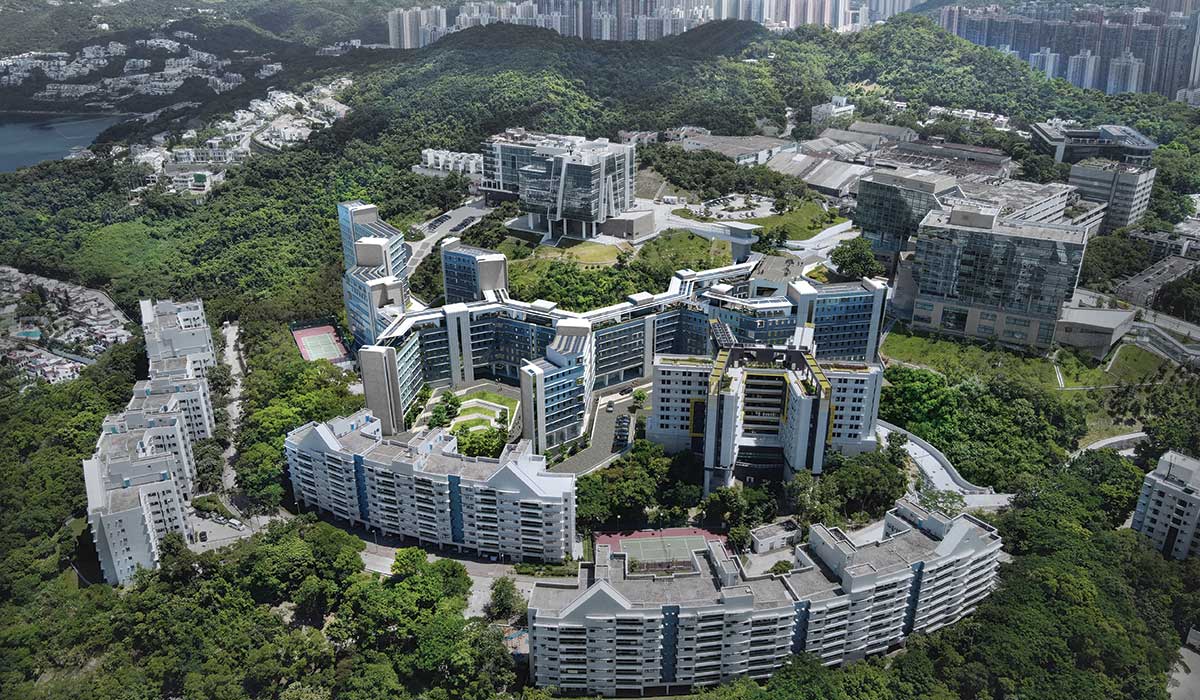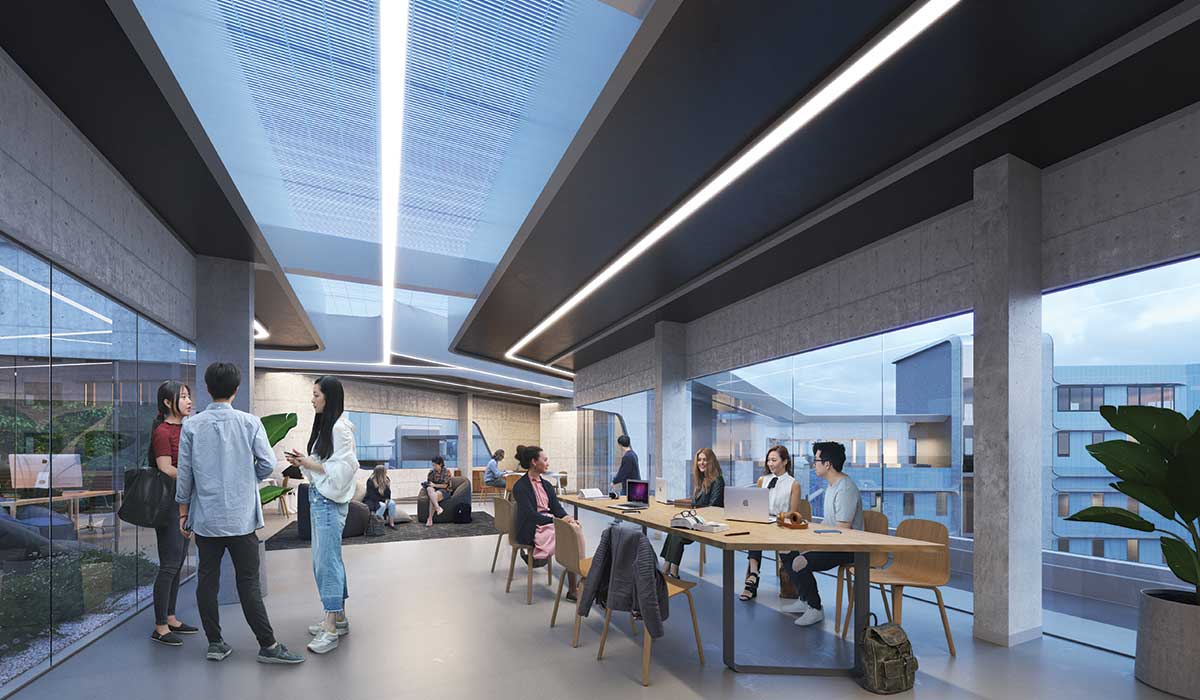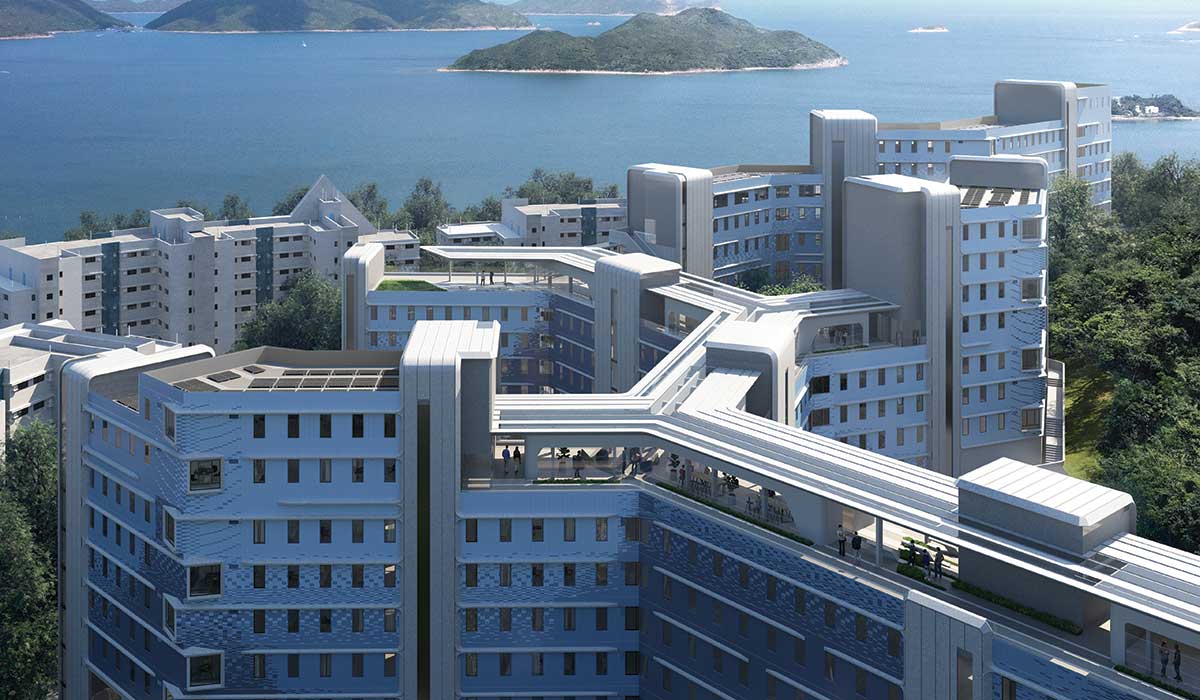
Established in 1991, HKUST is also one of the world’s fastest growing universities. Its new halls of residence within its Clear Water Bay campus (planned for completion in 2023) are designed by Zaha Hadid Architects in collaboration with Leigh & Orange to house over 1,500 students. Marrying advanced digital design technologies with sustainable construction practices and operational strategies for its 50-year life cycle, the design is guided by the University’s mission to harness technology and innovation.
The new halls of residence are embedded within a steeply sloping site of approximately 25m of level difference. The building’s roof line has been designed as its primary circulation and incorporates shaded outdoor areas for students and staff. This rooftop walkway creates a new connection between the academic blocks of the north campus and the primarily residential blocks of the south, eliminating the need for students and staff to circumnavigate the hilly terrain.
Digital design tools allowing simultaneous considerations of numerous site parameters including terrain levels, solar radiation, sightlines, and soil conditions have defined the design’s optimal configuration and orientation; while the digital encoding of its internal spaces enabled layout tests to optimize functionality and adaptability, as well as accurate calculation of natural light levels.

The halls of residence are organized in a hexagonal configuration creating four courtyards terraced into the steeply sloping site. With all rooms facing open spaces, approximately 35,500 sqm of accommodation includes communal areas for living, learning, recreation, and leisure. The courtyards are designed to be quieter spaces for rest and relaxation, while the surrounding hillside will be replanted to prevent soil erosion with zones for exercise and social activities.
BIM and 3D simulations have optimized the design coordination and material selection, while construction strategies ensure efficient procurement and construction. Following Hong Kong Government’s initiatives to increase build quality while also reducing construction time and waste, the building’s modular systems include pre-assembled façade units and washroom pods that are quickly installed on-site.
Designed as a series of prefabricated modules, the façade units incorporate thermal insulating layers and double-glazed windows with a low shading co-efficient. Digital mapping evaluations of solar paths and heat gain have determined the geometries of the external solar shading fins positioned above the windows within the façade units. To ensure thermal comfort, the geometries of these shading fins vary in depth and length in response to solar exposure on each façade unit and the programmatic planning of the interior spaces. Different colours of ceramic tiles are applied to flat areas of each precast façade module that vary in shade dependent on the solar heat gain calculated for each unit, creating a continuous mural that visualizes the building’s micro-climate and thermal considerations.

The halls’ environmental systems are integrated within the university’s centralised network. Incorporating a central chiller plant using seawater-cooled central chilling provides significant reductions in energy consumption. As an important circulation route for the campus, the halls’ roof includes substantial thermal and sound insulation while photovoltaic arrays installed on the roof’s inaccessible sections will harvest renewable energy in accordance with the university’s commitment to achieving carbon-neutral operations.















